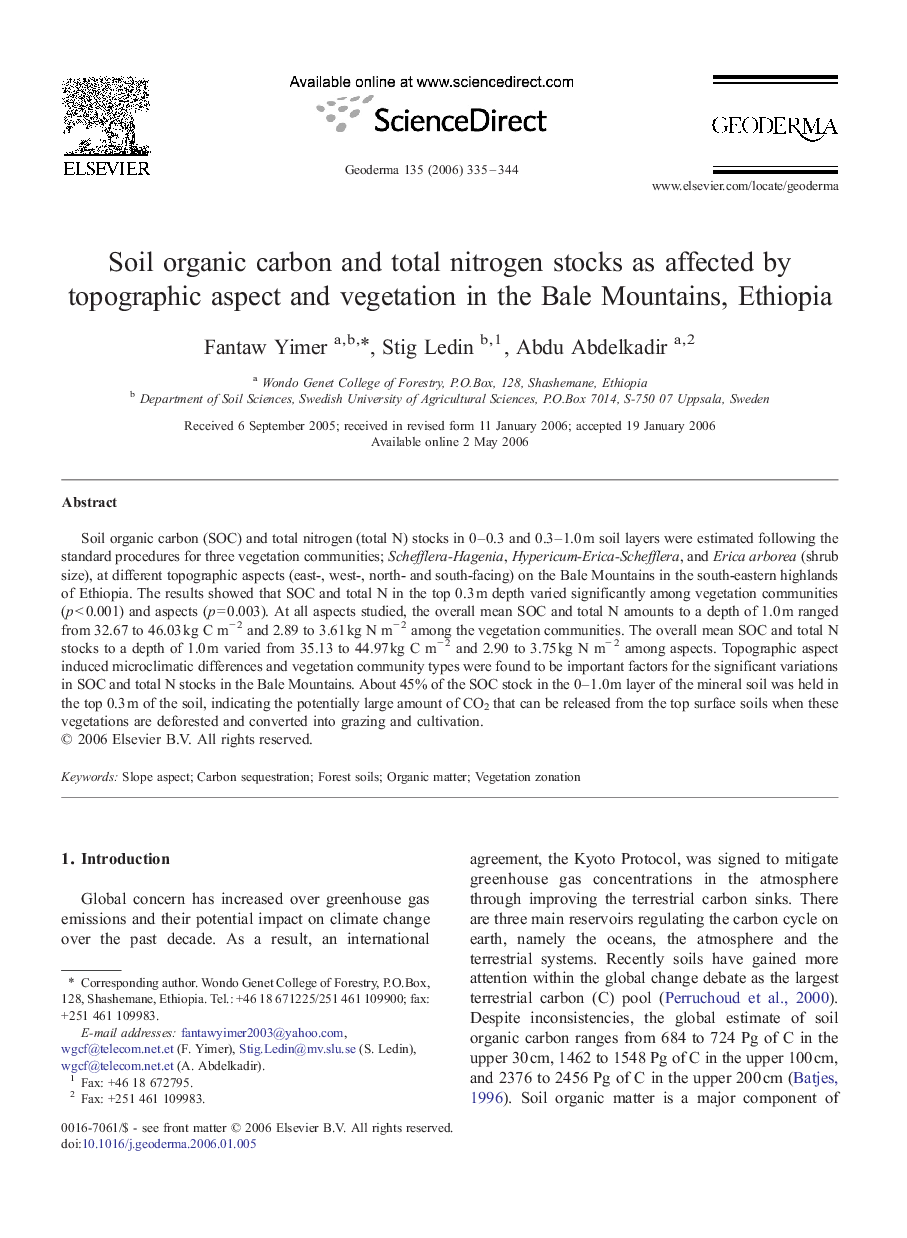| Article ID | Journal | Published Year | Pages | File Type |
|---|---|---|---|---|
| 4575732 | Geoderma | 2006 | 10 Pages |
Soil organic carbon (SOC) and total nitrogen (total N) stocks in 0–0.3 and 0.3–1.0 m soil layers were estimated following the standard procedures for three vegetation communities; Schefflera-Hagenia, Hypericum-Erica-Schefflera, and Erica arborea (shrub size), at different topographic aspects (east-, west-, north- and south-facing) on the Bale Mountains in the south-eastern highlands of Ethiopia. The results showed that SOC and total N in the top 0.3 m depth varied significantly among vegetation communities (p < 0.001) and aspects (p = 0.003). At all aspects studied, the overall mean SOC and total N amounts to a depth of 1.0 m ranged from 32.67 to 46.03 kg C m− 2 and 2.89 to 3.61 kg N m− 2 among the vegetation communities. The overall mean SOC and total N stocks to a depth of 1.0 m varied from 35.13 to 44.97 kg C m− 2 and 2.90 to 3.75 kg N m− 2 among aspects. Topographic aspect induced microclimatic differences and vegetation community types were found to be important factors for the significant variations in SOC and total N stocks in the Bale Mountains. About 45% of the SOC stock in the 0–1.0 m layer of the mineral soil was held in the top 0.3 m of the soil, indicating the potentially large amount of CO2 that can be released from the top surface soils when these vegetations are deforested and converted into grazing and cultivation.
